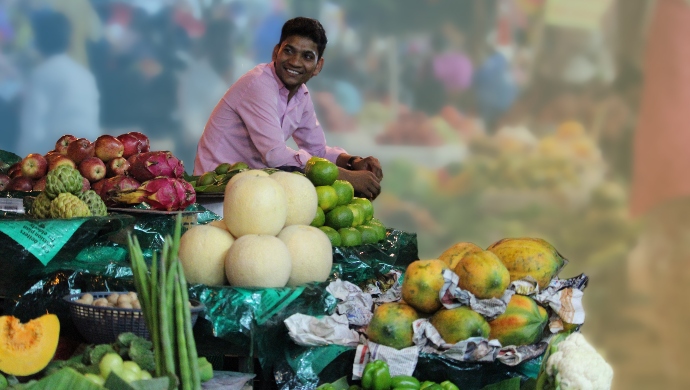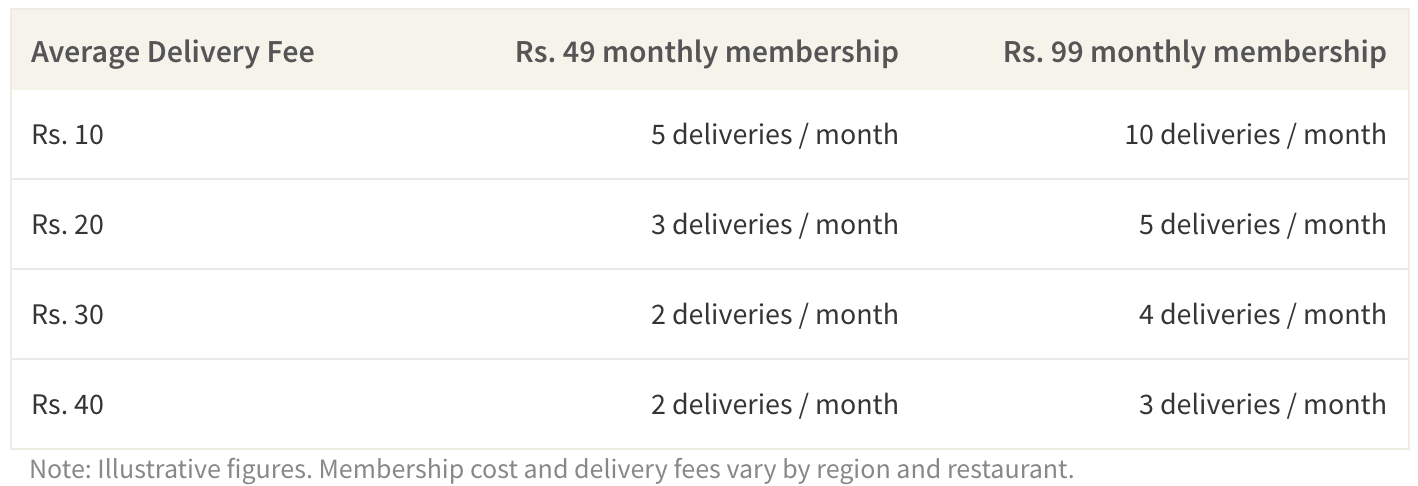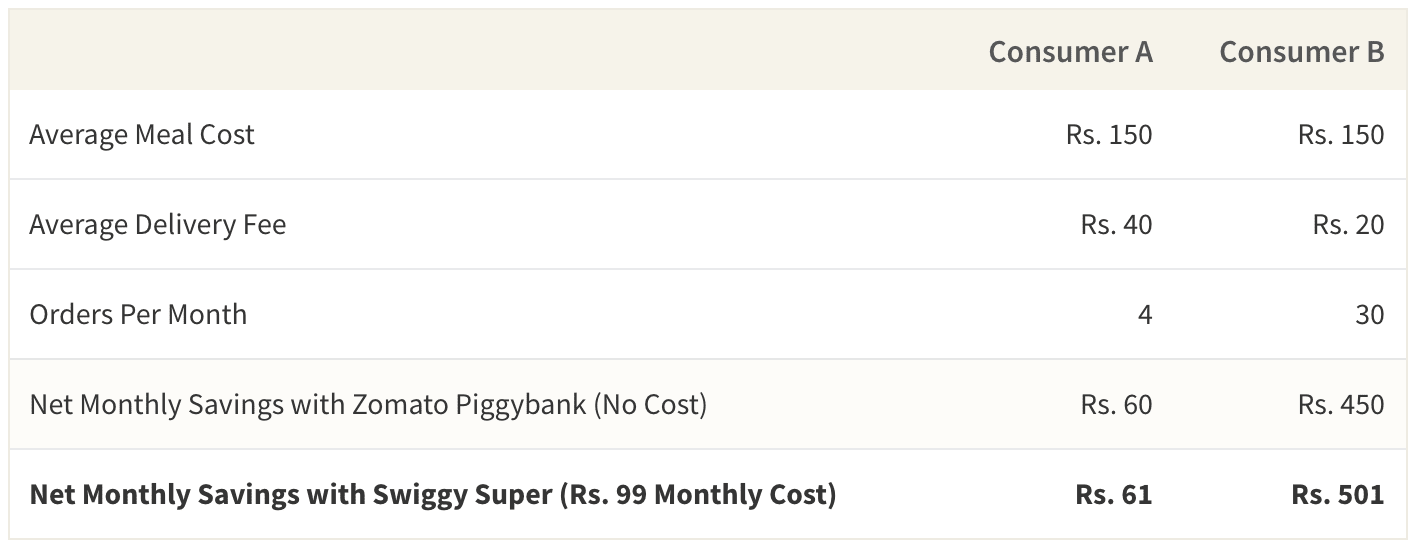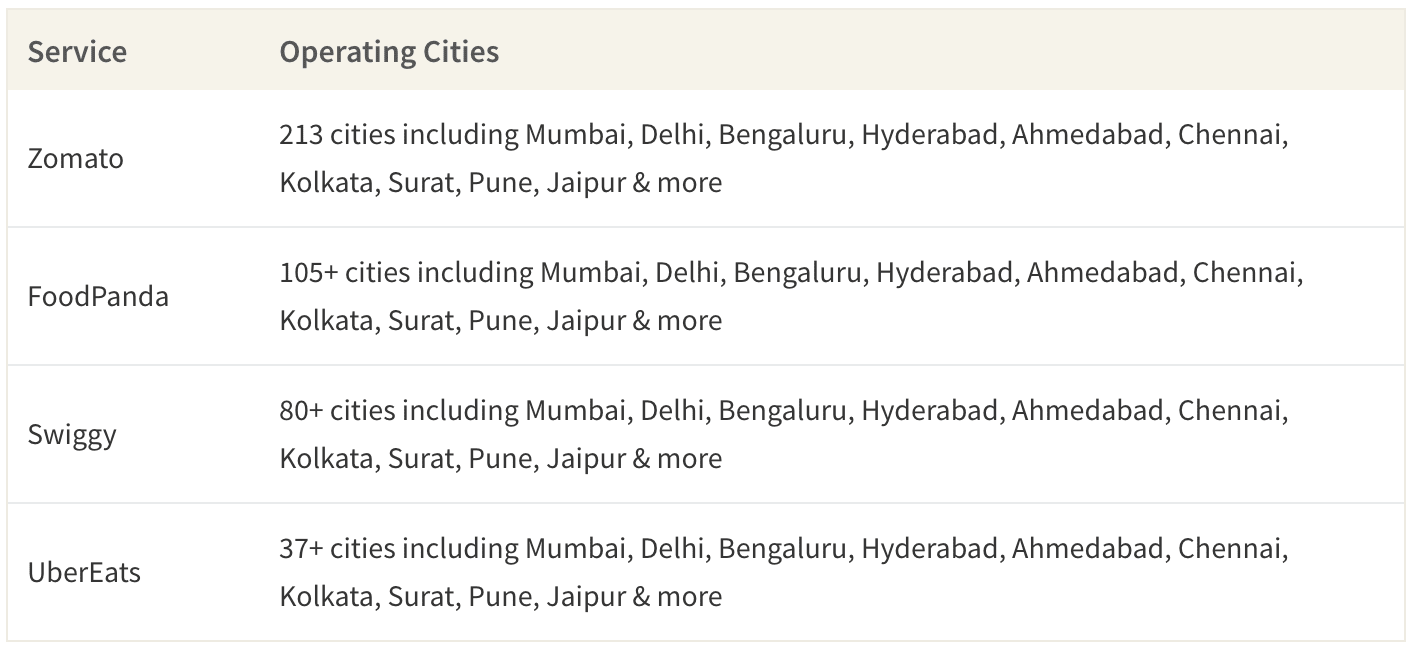Swiggy Super and Zomato battle with FoodPanda and UberEats for dominance in India

As investor capital continues to pour into the online food delivery industry in India, companies are working hard to compete for diner demand.
To win customer loyalty, some platforms explicitly guarantee things like pricing consistency or speedy delivery, while others are starting to offer subscription-based rewards or other monetary benefits.
If deciding among multiples platforms, a consumer must consider restaurant availability, cost, delivery speed and overall customer experience. With no obvious choice, we researched the relevant players in the space to help Indians differentiate and decide which service to use.
Rewards and Monetary Benefits
With their respective rewards programs, Zomato and Swiggy have a leg up on FoodPanda and UberEats, which do not offer rewards. With 10% back on every order (redeemable at certain restaurants and currently cost-free), Zomato Piggybank is the better choice for consumers who typically order moderate-to-high priced meals.
Swiggy Super, which provides free delivery for a monthly fee, is the better option for consumers who order cheap meals and/or quite frequently.
When it introduced Piggybank, Zomato said that it would eventually charge an annual subscription fee of Rs. 299 for this benefit, but for now it appears to remain free via select invitation or user referral. If Zomato sticks to its initial announcement and eventually makes the program subscription-based, one would need to spend at least Rs. 2,990 annually, or Rs. 249 monthly, to break even on a membership.
Swiggy Super offers unlimited free delivery and no surge fees. Membership costs vary by city, but we have seen quotes from Rs. 49–99 for 1 month and Rs. 129–149 for 3 months.
Also Read: Today’s top tech news, June 06: Lazada Co-founders launch social e-commerce startup Crea
Given that general delivery fees tend to range from Rs. 10–40 depending on the city and the restaurant, members would generally have to order at least 2-10 deliveries per month for them to breakeven on their subscription cost.
Minimum Deliveries to Break Even on Swiggy Super

Zomato Piggybank vs. Swiggy Super
If both are available in one’s area, Zomato Piggybank is better if one typically orders moderate-to-high priced meals. Swiggy Super wins for cheap meals, where the delivery fee is a relatively high percentage of the total order.
For example, let’s conservatively assume that one’s monthly Swiggy Super membership is Rs. 99. To make Swiggy Super more valuable than Zomato Piggyback, a diner would only need to order a Rs. 150 meal 4 times per month if delivery fees in his area are on the higher end (e.g. Rs. 40). If delivery fees are lower (e.g. Rs. 20), one would need to order such a meal practically daily to make Swiggy Super worth it.

Quality Guarantees
Swiggy and FoodPanda edge out Zomato and UberEats with their service guarantees. Swiggy’s 30 Minutes or Free ensures delivery in under 30 minutes for orders under Rs. 500 from select restaurants, so Swiggy is the winner on delivery speed.
FoodPanda’s Price Promise essentially ensures the price you pay will not differ versus the restaurant’s menu, although our own check (albeit limited) did not show much variability between the apps in terms of menu pricing.

Regional Availability
One obviously cannot use a restaurant delivery service if it does not operate in one’s area. Zomato’s widest reach makes it the winner here, having recently expanded its presence to 213 cities, and its eyes are set on 500 by October 2019.
To help with your selection process, we’ve rank ordered the 4 companies by number of operating cities.

App Ratings & Customer Experience
Zomato and UberEats are tied for the highest ratings in India on the Apple App Store at 4.6 stars out of 5. Swiggy isn’t far behind at 4.3 stars, but FoodPanda’s poor 1.8 rating is a red flag.

Is There a Clear Overall Winner?
In short, there isn’t one service that clearly stands above the rest in all aspects. However, Zomato Piggybank and Swiggy Super give those companies a significant edge over their competition.
Also Read: Temasek, Tencent inject US$35M into open-banking software company TrueLayer
Although FoodPanda’s Price Promise is a great feature, it may not be enough to outweigh its poor app rating. The one aspect where UberEats stands out is its high app rating, which may present a strong enough case for some consumers to choose.
Getting the Most Out of Dining Spending
In general, using a credit card to pay for daily purchases is the best way to get the most out of your spending due to the valuable rewards offered like cashback or airline miles.
There are a number of credit cards in India that provide high rewards specifically on dining spend. How much one can earn using a credit card depends on one’s spending profile, but annual rewards could easily amount to thousands of rupees every year, which is essentially free money if you use your card responsibly.
—
This article originally appeared on ValueChampion’s blog
Photo by shivam Grover on Unsplash
The post The battle for restaurant delivery dominance: How India’s online food ordering platforms stack up appeared first on e27.